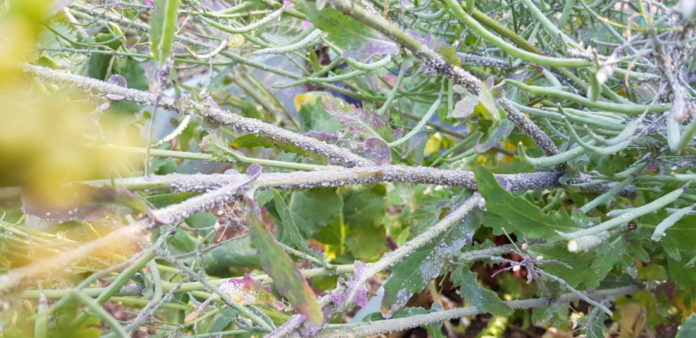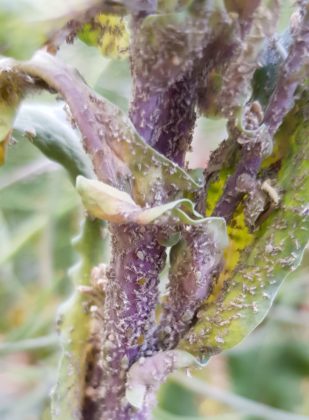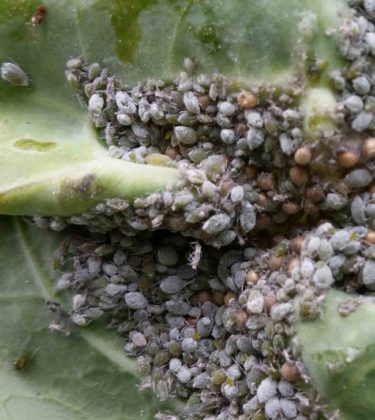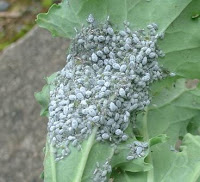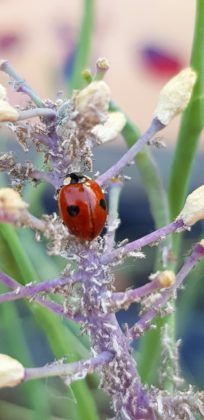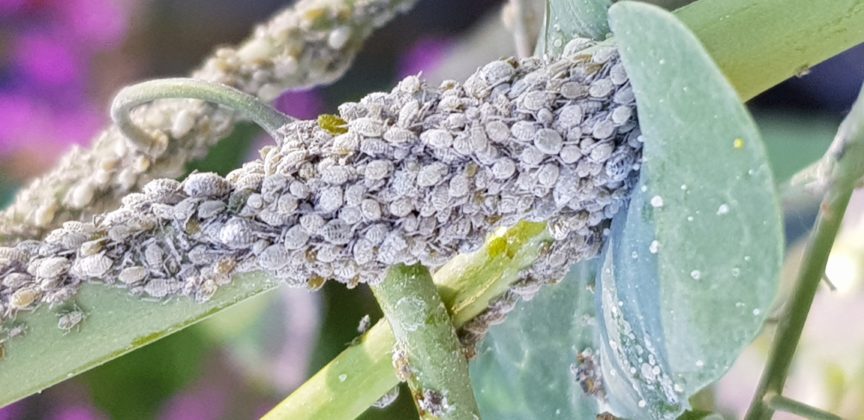Mealy Cabbage Aphids on Brassica Crops
There are a vast array of aphids in the natural world. We usually think of greenfly on our roses or black bean aphids on our broad beans but there are many more varieties of these little pests, including Mealy Cabbage Aphids. They are all unwelcome visitors to our vegetable, community gardens and allotments but there’s an easy way to dissuade them. Creating great soil conditions that keep your plants healthy and attracting beneficial insects is a start.
Aphids have a tendency to head for the soft tips of our plants, reducing yields as they munch their way through flower and growing tips. They leave their skins, wax and honeydew in situ as they move from one plant to another, often killing young plants and attracting ants who like to farm the aphids for their sticky excretions.
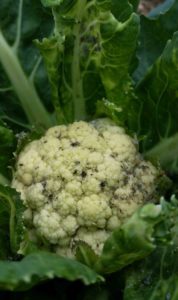 Mealy Cabbage Aphids can transmit the virus, including turnip mosaic virus and cauliflower mosaic virus as they pierce the leaves with their proboscis, sucking the sap and then depositing the virus into the next plant as they move around. They can smother leaves, flowers and stems, look unsightly and make the vegetables quite unappealing and unappetising.
Mealy Cabbage Aphids can transmit the virus, including turnip mosaic virus and cauliflower mosaic virus as they pierce the leaves with their proboscis, sucking the sap and then depositing the virus into the next plant as they move around. They can smother leaves, flowers and stems, look unsightly and make the vegetables quite unappealing and unappetising.
One of the first and most important steps in Integrated Pest Management is prevention, making the crop walk a necessary and vital element of organic gardening and growing. If you do it regularly, you’ll notice changes in your plants before major problems occur. If you’re not sure what to look for, invest in a good book such as the RHS Pests and Diseases by Pippa Greenwood. An invaluable asset on any gardener’s bookshelf.
Unfortunately, we missed the attack of the Mealy Cabbage Aphids on the kale plants photographed above. We were leaving the plants to set seed in Gleann na Bearu community garden, hoping to save the Irish Seed Saver seeds for the next growing season. By the time we spotted the little pests, we were only able to rescue a handful of seed pods, the rest of the plants were too late to save.
How to recognise a Mealy Cabbage Aphid Attack
The first symptom of an attack in vegetable Brassica that includes greens such as kale, cauliflower, cabbage, turnips, swede, broccoli and calabrese are small, bleached patches on the leaves. You will then notice that the patches become yellow and the leaves crumple. Small, wingless, bluish-grey aphids up to 2.6mm long cluster together, often on the undersides or tips of the leaves.
Non-Chemical Control for Mealy Cabbage Aphids
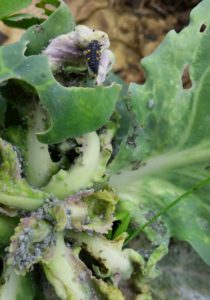 Vigilance is the number one control.
Vigilance is the number one control.
If you spot aphids of any kind early enough, you can rub them off with your fingertips or blast them with the hose if the plants aren’t too delicate.
Remove and destroy infected leaves and stems, don’t compost them; the pests will simply move from your compost heap back to your plants.
Provide Habitats
Providing habitats for natural predators such as parasitic wasps, ladybirds, hoverflies, lacewings, spiders and predatory flies will help with organic pest control. Herbs such as Calendula, chives, feverfew, yarrow, dill, fennel, marigold, angelica and caraway will attract ladybirds, as will leaving patches of stinging nettles. Avoid sprays of any kind. Even ‘natural’ soap sprays are indiscriminate, killing the beneficial insects as well as the pests. There’s a lovely list of plants that attract beneficial insects on the Permaculture News website.
I hope you haven’t suffered a serious aphid attack in your garden but if you did, which ones have been the most problematic for you?


